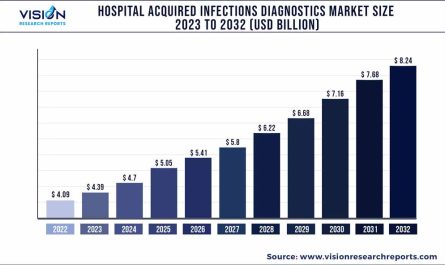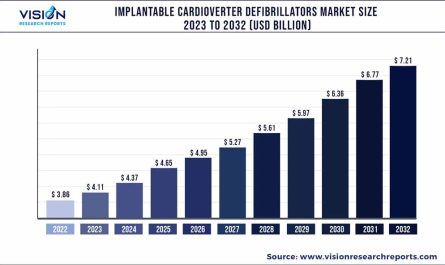The global RNAi technology market size was estimated at around USD 2.63 billion in 2023 and it is projected to hit around USD 10.29 billion by 2033, growing at a CAGR of 14.62% from 2024 to 2033.

Understanding RNA Interference (RNAi)
At its core, RNAi involves the silencing of gene expression through the action of small RNA molecules. These small RNAs, known as small interfering RNAs (siRNAs) or microRNAs (miRNAs), function by binding to complementary sequences of messenger RNA (mRNA), which prevents the mRNA from being translated into proteins. As a result, the targeted gene’s expression is effectively silenced.
RNAi Technology Market Overview
The RNA interference (RNAi) technology market is witnessing substantial growth, driven by advancements in molecular biology, biotechnology, and healthcare. RNAi, a potent gene silencing mechanism, has transformed our understanding of gene function and regulation, offering promising avenues for therapeutic interventions and research applications.
The market dynamics of RNAi technology are influenced by several factors. Therapeutically, RNAi holds great promise for treating various diseases like cancer, genetic disorders, and viral infections. This potential has attracted significant investment in RNAi-based therapeutics. Moreover, in research and development, RNAi’s expanding utility in basic research, drug discovery, and target validation is driving demand for innovative tools and reagents. Additionally, in agricultural biotechnology, RNAi-based solutions such as pesticides and genetically modified crops are gaining traction.
However, the RNAi technology market faces several challenges. Efficient delivery of RNAi therapeutics to target cells remains a significant hurdle, impeding their clinical translation. Addressing delivery barriers while ensuring specificity and safety is crucial. Furthermore, off-target effects, where unintended genes are silenced, pose risks to RNAi-based therapies. Developing strategies to minimize off-target effects is imperative for enhancing therapeutic efficacy. Additionally, regulatory uncertainty surrounding RNAi-based drugs adds complexity to market dynamics, requiring clarity in regulatory guidelines.
Mechanism of Action
The mechanism of RNAi can be summarized into a few key steps:
- Generation of Small RNAs: The process begins with the generation of small RNA molecules, either through the transcription of specific genes or the processing of longer precursor RNA molecules.
- Loading onto RNA-Induced Silencing Complex (RISC): The small RNAs are then loaded onto a multi-protein complex called the RNA-induced silencing complex (RISC).
- Target Recognition: The small RNA guides the RISC complex to target mRNAs that have complementary sequences. Once bound, the RISC complex cleaves the mRNA or inhibits its translation, thereby preventing the production of the corresponding protein.
Role in Gene Silencing
RNA interference plays a crucial role in regulating various cellular processes, including development, differentiation, and defense against viruses and transposable elements. By modulating gene expression, RNAi influences diverse biological phenomena, ranging from cell proliferation and apoptosis to immune responses and neuronal function.
In summary, RNA interference is a fundamental mechanism that cells use to regulate gene expression, providing researchers with powerful tools for studying gene function and potential therapeutic applications.
Get a Sample@ https://www.visionresearchreports.com/report/sample/41381
RNAi Technology Market Dynamics
Drivers
- Therapeutic Potential: RNA interference (RNAi) technology holds immense promise for treating a wide range of diseases, including cancer, genetic disorders, and viral infections. By selectively silencing disease-causing genes, RNAi-based therapeutics offer a targeted approach to disease management. The ability to modulate gene expression at the molecular level has spurred significant investment in RNAi-based drug development, driving growth in the market.
- Research and Development Demand: The expanding scope of RNAi technology in basic research, drug discovery, and target validation is driving demand for innovative tools and reagents. RNAi-based techniques provide researchers with valuable insights into gene function and regulation, facilitating the development of novel therapeutics and diagnostics. As a result, there is a growing need for RNAi reagents, kits, and services, fueling market growth in the research and development sector.
- Agricultural Biotechnology Applications: In the field of agricultural biotechnology, RNAi technology offers promising solutions for crop protection and enhancement. RNAi-based pesticides and genetically modified crops with improved traits, such as disease resistance and enhanced yield, are gaining traction in the agricultural sector. The ability to target specific pests and pathogens while minimizing environmental impact drives adoption of RNAi technology in agriculture, contributing to market expansion.
Restraints
- Delivery Challenges: Efficient delivery of RNAi therapeutics to target cells remains a significant hurdle in the development of RNAi-based drugs. The delivery of RNAi molecules to specific tissues or cells while maintaining stability and avoiding off-target effects is a complex endeavor. Overcoming delivery challenges requires innovative delivery systems that can navigate biological barriers and ensure effective delivery to the intended site of action.
- Off-Target Effects: One of the challenges associated with RNAi technology is the occurrence of off-target effects, where unintended genes are silenced due to sequence similarity with the target gene. Off-target effects can lead to unintended consequences, including toxicity and disruption of normal cellular processes. Minimizing off-target effects through improved design strategies and delivery systems is essential to enhance the safety and efficacy of RNAi-based therapies.
- Regulatory Uncertainty: The regulatory landscape surrounding RNAi-based drugs is complex and evolving. Regulatory agencies face challenges in evaluating the safety, efficacy, and specificity of RNAi therapeutics, particularly concerning off-target effects and delivery systems. Uncertainty in regulatory guidelines can pose barriers to market entry and slow down the development and commercialization of RNAi-based drugs. Clear and consistent regulatory pathways are necessary to foster innovation and ensure patient safety in the RNAi technology market.
Opportunities
- Advancements in Delivery Systems: Continued advancements in delivery systems hold significant promise for overcoming the challenges associated with RNAi therapeutics. Novel delivery platforms, such as lipid nanoparticles, polymer-based carriers, and exosome-based vehicles, offer improved stability, target specificity, and cellular uptake. These advancements enhance the efficacy and safety of RNAi-based drugs, opening up new opportunities for therapeutic applications in diverse disease areas.
- Targeting Non-Coding RNAs: Expanding the scope of RNAi technology to target non-coding RNAs presents exciting opportunities for therapeutic intervention. Non-coding RNAs, including microRNAs (miRNAs) and long non-coding RNAs (lncRNAs), play critical roles in gene regulation and disease pathogenesis. Targeting non-coding RNAs with RNAi-based approaches offers novel strategies for modulating gene expression and treating diseases with high precision and specificity.
- Personalized Medicine: The advent of precision medicine approaches, coupled with advancements in RNAi technology, presents significant opportunities for personalized RNAi-based therapies. By tailoring treatments to individual patient profiles, personalized RNAi therapies can improve treatment outcomes and reduce adverse effects. Biomarker-guided selection of RNAi targets and patient stratification based on genetic and molecular profiles enable customized treatment regimens, maximizing therapeutic efficacy while minimizing side effects.
RNAi Technology Market Segmentation Insights
By Application:
- Therapeutics: RNAi technology has immense potential in therapeutic applications, including the treatment of various diseases such as cancer, genetic disorders, infectious diseases, and neurodegenerative conditions. RNAi-based therapeutics offer a targeted approach to gene silencing, enabling precise modulation of disease-causing genes.
- Research and Development: RNAi technology plays a vital role in basic research, drug discovery, and target validation. Researchers use RNAi tools and reagents to study gene function, identify therapeutic targets, and screen potential drug candidates. The demand for RNAi-based research tools is driven by the growing need for innovative solutions in the pharmaceutical and biotechnology industries.
- Agricultural Biotechnology: In agriculture, RNAi technology is utilized for crop protection, pest control, and trait enhancement. RNAi-based pesticides offer environmentally friendly alternatives to traditional chemical pesticides, while genetically modified crops with RNAi-mediated traits exhibit improved resistance to pests, diseases, and environmental stresses.
By End User:
- Pharmaceutical and Biotechnology Companies: Pharmaceutical and biotechnology companies are major end-users of RNAi technology, employing RNAi-based approaches for drug discovery, development, and commercialization. These companies invest in RNAi research and development to bring innovative therapeutics to market and address unmet medical needs.
- Academic and Research Institutions: Academic and research institutions play a crucial role in advancing RNAi technology through fundamental research and translational studies. These institutions utilize RNAi tools and technologies to investigate gene function, develop experimental models, and explore therapeutic applications across various disease areas.
- Contract Research Organizations (CROs): Contract research organizations provide specialized services in RNAi-based research, including target validation, screening assays, and preclinical studies. CROs offer expertise and infrastructure for outsourcing RNAi-related projects, enabling pharmaceutical companies and academic researchers to accelerate drug discovery and development programs.
By Region:
- North America: North America dominates the RNAi technology market, driven by the presence of leading pharmaceutical and biotechnology companies, well-established research infrastructure, and favorable regulatory environment. The United States, in particular, accounts for a significant share of RNAi research and development activities.
- Europe: Europe is a key region for RNAi technology, with a strong emphasis on academic research, biotechnology innovation, and clinical development. Countries like the United Kingdom, Germany, and Switzerland are hubs for RNAi research and commercialization efforts.
- Asia Pacific: The Asia Pacific region is experiencing rapid growth in the RNAi technology market, fueled by increasing investments in biotechnology, healthcare, and agriculture. Countries such as China, Japan, and India are emerging as important players in RNAi research, development, and manufacturing.
- Latin America, Middle East, and Africa: These regions represent emerging markets for RNAi technology, characterized by growing awareness of RNAi-based therapeutics and increasing investment in biotechnology infrastructure. Market expansion in these regions is driven by rising healthcare expenditure, expanding pharmaceutical industry, and growing demand for innovative agricultural solutions.
Read More@ https://www.heathcareinsights.com/periodontal-therapeutics-market/
RNAi Technology Market Key Companies
- Thermo Fisher Scientific, Inc.
- Merck KGaA
- Creative Biolabs
- GenScript
- Revvity
- Promega Corporation
- OriGene Technologies, Inc.
- Altogen Biosystems
- Danaher
- Bioneer Corporation
RNAi Technology Market Segmentation:
By Product & Service
- Products
- miRNA
- siRNA
- Others
- Service
By Application
- Drug Discovery & Development
- Neurology
- Oncology
- Infectious Diseases
- Metabolic Diseases
- Others
- Functional Genomics
- Others
By End-use
- Pharmaceutical & Biotechnology Companies
- Academic & Research Institutes
- CROs & CMOs
By Region
- North America
- Europe
- Asia Pacific
- Latin America
- Middle East and Africa (MEA)
Buy this Premium Research Report@ https://www.visionresearchreports.com/report/checkout/41381
You can place an order or ask any questions, please feel free to contact sales@visionresearchreports.com| +1 650-460-3308


